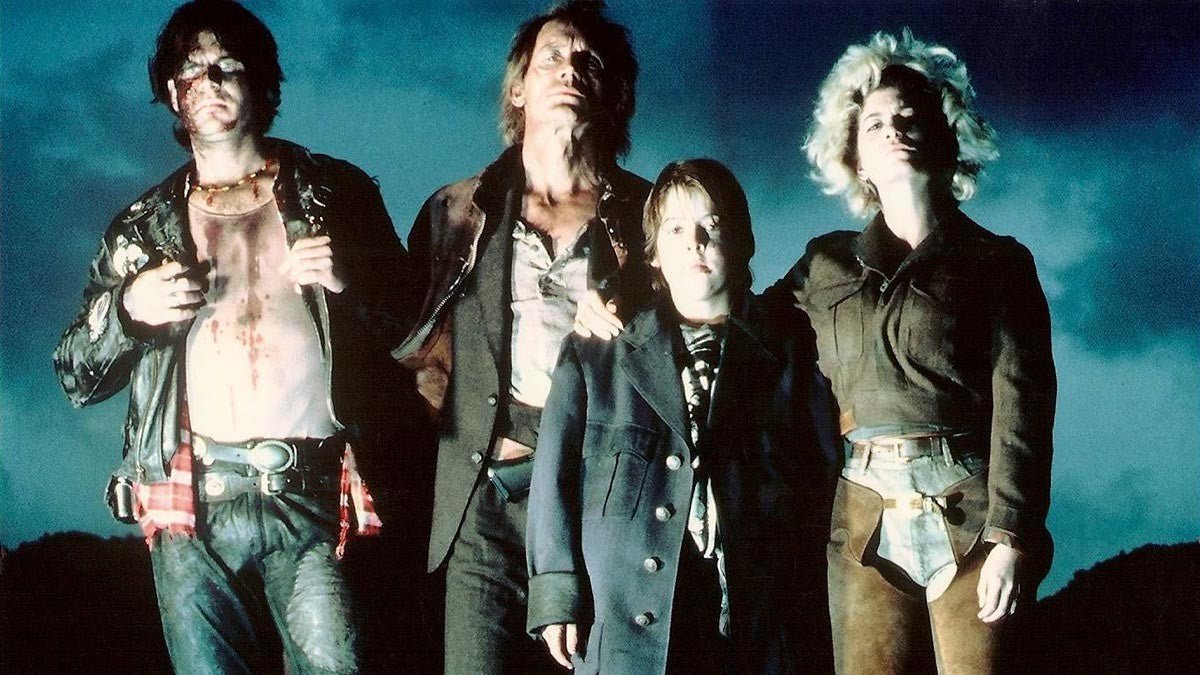The 1980s was a pivotal decade for vampire films, as it witnessed a resurgence of interest in the genre. After the classic Dracula films of the early 20th century and the Gothic horror of the 1960s and '70s, the '80s brought a fresh wave of creativity and innovation to vampire cinema. This essay delves into the vampire films of the 1980s, exploring their themes, influences, and impact on the genre. Additionally, it will highlight the top five vampire movies of that era, which contributed significantly to the evolution of this subgenre.

Near Dark (1987)
Kathryn Bigelow's "Near Dark" stands as a unique and gritty take on vampire lore. The film follows the story of a young man, Caleb, who falls in love with a mysterious woman named Mae, only to discover she is part of a nomadic vampire gang. "Near Dark" eschews traditional vampire tropes, replacing them with elements of the American Southwest, creating a western-meets-vampire narrative. The film's dark, atmospheric ambiance and complex characters set it apart as a standout '80s vampire movie.

Fright Night (1985)
"Fright Night," directed by Tom Holland, is a quintessential '80s vampire film. The story revolves around a teenager, Charley Brewster, who becomes convinced that his charismatic neighbor, Jerry Dandrige, is a vampire. With its blend of humor, horror, and teenage angst, "Fright Night" captures the spirit of the era. It not only reinvigorated the vampire myth but also added layers of social commentary on suburban life and teenage disillusionment.

The Lost Boys (1987)
Joel Schumacher's "The Lost Boys" brought a fresh perspective to the vampire mythos by situating it within the context of a coastal California town. The film explores the allure of youthful rebellion and camaraderie while infusing the vampire lore with a punk-rock sensibility. Starring Jason Patric and Kiefer Sutherland, "The Lost Boys" is a stylish, iconic film of the '80s that continues to resonate with audiences today.

The Hunger (1983)
Tony Scott's "The Hunger" is a visually stunning and erotically charged vampire film that features Catherine Deneuve, David Bowie, and Susan Sarandon in its lead roles. The film is a meditation on immortality, desire, and the consequences of eternal life. With its lavish cinematography and avant-garde sensibilities, "The Hunger" introduced a more sensual and adult-oriented approach to vampire storytelling, marking a departure from earlier vampire films.

Lifeforce (1985)
Tobe Hooper's "Lifeforce" takes a unique sci-fi twist on the vampire genre. When a space mission discovers an ancient alien spacecraft with three humanoids aboard, it sets off a chain of events that leads to a vampiric plague sweeping across London. The film combines elements of space exploration, vampire lore, and apocalyptic horror, making it a distinctive entry in the 1980s vampire film landscape.
The vampire films of the 1980s injected fresh blood into a genre that had been well-explored in the past. These films pushed boundaries, incorporating elements of humor, punk culture, and sensuality, while also delving into deeper themes such as adolescence, addiction, and the search for meaning in immortality. The top five vampire movies listed above undoubtedly left an indelible mark on the genre, influencing future generations of filmmakers and captivating audiences with their unique interpretations of the vampire myth. The 1980s remains a pivotal era in the history of vampire cinema, where innovation and creativity converged to redefine the bloodsucking creatures of the night.

